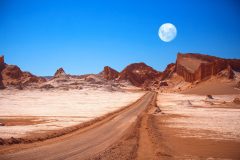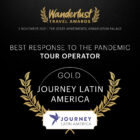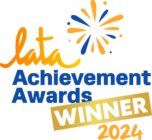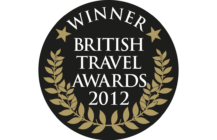Group - Discovery
Zampullin: Vistas of Bolivia
13 days from £4,115pp
(based on two people sharing & excluding flights)
Itinerary
 Map
Map
UK clients depart on an overnight flight arriving Santa Cruz, Bolivia, the next day.
Day 1
Transfer to your hotel Santa Cruz. City tour.
The dynamic city of Santa Cruz doesn’t quite reflect how most people imagine Bolivia. With plate glass and concrete, the sparkle of luxury four-wheel drive vehicles, and good restaurants and shopping malls the rapidly growing city wears its new-found oil wealth on its sleeve.
This prosperous lowland metropolis is wholly different from its Andean sisters, in climate, in politics and in ethnic mix. People have poured in from the altiplano to join German Mennonites, Brazilians and even Japanese in search of a better life. The sun can be fierce, the siestas always long, with heavy rain showers in the summer months.
You’ll all meet up with a local guide for a tour of the city, purpose-built in a series of rings. You will visit the huge, shady main square, the baroque cathedral which dominates it, and the indigenous Abasto craft shops.
The tour continues with some informal sight-seeing : there are lovely parks with lawns, fountains and street art, tawdry but fascinating street markets selling everything from mobile phones, electric saws to gold jewellery and mangoes, spread over the streets around the handsome colonial core. A little further out you discover up-market, tree-shaded residential quarters. After all that exploring you’ll appreciate the chance to enjoy a cup of coffee in one of the traditional cafés in town

Day 2
Drive to mountain town Samaipata via el Fuerte ruins.
Drive out of Santa Cruz up in to the mountains. You pass through several market towns, and the landscape soon changes from cattle farms and fields of sunflowers to orchards and villages speckled with summer homes.
Canyons with blood-red cliffs fringe a winding river; follow the valley up to the prosperous little resort of Samaipata (120km), which has a glorious setting in the now unfolding mountain scenery.
Just before reaching the town you will turn off to visit the Inca Ruins at el Fuerte, a UNESCO World Heritage Site sitting on a ridge from where there extensive mountain views. The site has pre-Inca carvings and post-Inca Spanish colonial buildings superimposed on Inca walls. Owing to its relatively remote location there may well be no-one else there: this is an evocative and fascinating site.
Samaipata is a great place to spend the evening and overnight. To cater for them and the captivated foreigners who have moved here, there is a clutch of good restaurants and literary café style hang-outs, some around the leafy main square. The market is worth a look too, bulging with a dazzling display of fruit and vegetables.

Day 3
Drive to Vallegrande, visit Che Guevara’s museum, on to La Higuera.
You depart Samaipata for Vallegrande on a winding paved road, undulating over the rugged hills for 185km. You’ll enjoy lovely valley views, cattle farms, dusty agricultural towns, pig farms, peach groves and maize fields. The drive should take two hours but it can take longer – up to 3hrs – if there is a lot of traffic.
Vallegrande is another typical Spanish-style mountain town, but less-visited than Samaipata. It’s the place to which Che Guevara’s body was taken following his death at the hands of the Bolivian military. You can visit the laundry where he was laid out, now a shrine for his followers, and the museum dedicated to his exploits. The museum has photographs of Che in both Cuba and Bolivia and a few items of clothing. There is a good chronology of the Bolivian campaign. The Tumba Mausoleum was built over Che’s grave. Ghoulishly, it is now just a room with an empty cordoned-off pit: Che and his comrades’ bodies have been returned to Cuba.
Continue 60km to La Higuera on an unmade road. It’s a beautiful route through arid canyons, where you’ll rise to over 3,000m and descend a spectacular cliff-edge road. The road follows the folds of the ranges of craggy hills, increasingly rugged with exposed rocks, scrubby vegetation and free-range cattle.
La Higuera is a quiet hamlet, deserted during the day when most of the inhabitants are out working their farmsteads. It is the place where Che Guevara was killed, and you will visit the tiny former schoolroom where he was imprisoned and shot. There are many written tributes to the revolutionary leader alongside faded photographs. A few T shirts adorned with his face are on sale. The walls of the buildings in the hamlet are covered with vivid murals and the public spaces are festooned with statues of the man who is still regarded as a hero in these parts.
Overnight in one of the simple hostels in this remote, evocative spot.

Day 4
Drive on through highland landscapes to Sucre.
It’s back on the road for 3hrs along an unmade road to red-roofed Villa Serrano, home of famous sculptor and musician Mauro Nuñez which has a museum and the largest charango (Andean lute) in the country.
Continue on a good quality road to Sucre (4hrs) which lies in a remote valley at, for Bolivia, a relatively benign altitude of 2,800m. Provincial in outlook, it is nevertheless the legislative capital of the country.
Day 5
Guided city tour of Sucre.
Your guided city tour takes you to view some of the city’s loveliest colonial parks and buildings: these may include Casa de la Libertad on the main square where the declaration of Bolivian Independence was signed in 1825. You also visit the ASUR indigenous Art Museum – a 17th century colonial building. Exhibits include ancient textiles, musical instruments, costumes and ritual artefacts. A highlight is the Weavers’ Gallery, where you learn about indigenous techniques and designs.
Another interesting visit may be made to La Recoleta, a Franciscan convent which offers splendid views over the valley. It has beautiful cloisters and gardens where an ancient cedar tree still stands. The adjoining chapel is notable for its intricate woodcarvings. In the third cloister is a museum exhibiting sculptures, paintings and other religious works.

Day 6
Continue by road to Potosí on the altiplano.
This scenic 3hr journey passing through fertile landscapes with fields of peas, beans and cereals. Agriculture peters out as you ascend up to the cold, high plains of the starkly beautiful altiplano.
At 4,090m Potosí is the highest city in the world. Its former wealth lay in its silver; today it lies in the vestiges of its history and the grand buildings born from a city that was quite literally founded on a mountain of wealth – the Cerro Rico. Nowadays it’s a relatively poor city, isolated from the economic power engines of the country. However, with its narrow streets and grandiose architecture it is one of Bolivia’s great treasure troves.
There is a walking tour that takes you to the market and some of the city’s principal historical attractions. Among these are Santo Domingo church and the vast 16th century cathedral. San Lorenzo church, with its baroque façade of flesh-coloured stone, has works of art adorning the ornate altar along with two original paintings by Holguin.
You’ll have a guided tour round the Casa de Real de la Moneda which occupies an entire block near the cathedral. This mint created the currency for the entire Spanish Empire. The museum has a fascinating history, comprising not just the Royal Mint, but also a prison, fortress, and HQ for the Bolivian army during the Chaco War. The museum displays crafted silverware, oil paintings and Bolivia’s first locomotive train.

Day 7
Visit a co-operative mine in Potosí and continue to Uyuni.
The tunnels which honeycomb the Cerro Rico are as dark and poisonous as the city’s gruesome past. If conditions look harsh in the blood red hills that surround Potosí, they are nothing compared to those endured by the miners who plummet the depths of this warren-ridden mountain. Inside temperatures can rise into the 50°C and plunge to below freezing point. Ceilings are low, conditions cramped and the tools used primitive. Miners get by on a staple diet of cigarettes – the least noxious of the mine’s cocktail of fumes – coca leaves and dogged determination. You’ll see altars with offerings to the devil: miners cannot believe that a benign God reigns here.
This is a working mine: you see the miners at work and wagons coming along the tracks. You are provided with safety gear. You need to be agile and not suffer from claustrophobia or allergy to sulphur. So of course if you prefer not to enter the mine or wish to come out early that’s fine.
In the afternoon drive on to Uyuni. Along the way you will pass site of a mine in production since colonial times and reach the Cañón de San Juan, distinguished by the rust-red colours of its steep rocky walls over which crash the waters of Lake Toro. Continue through rough pastures with grazing llamas towards the fringes of the Uyuni salt flats.
Pass Pulacayo, once a stop on the first Bolivian railway and home to one of the silver barons. This is wild and remote Butch Cassidy country, dotted with the vestiges of colonial settlements. 18km further on is the town of Uyuni and your first glimpses of the glistening white salt pans.
Day 8
Explore the Uyuni salt flats.
Visit the “train cemetery” full of abandoned, rusting engines evocative of more prosperous and dynamic times.
Travel on by 4WD vehicle to the Salar de Uyuni. The bleak plains of the southern altiplano make for an austere, uncompromising wilderness, scoured by bitter gales, where cut-glass lakes and un-trodden, luminous salt pans reflect the vast dome of an icy sky.
At 3,650m the salar is the highest salt desert in the world and arguably the largest. When the rains fall, the desert is turned into a mirror, salt plains and sky fuse, and the world is turned upside down. In the dry season, however, the dazzling white of the salt crystals extends as far as the eye can see: an other-worldly sight.
While its few wind-buffeted Aymara inhabitants scratch a meagre living from the dusty soil, there are landscapes of unexpected variety and surreal beauty. You’ll observe desolate, denuded peaks, sunlit lagoons of gem-stone clarity and a white sea of salt that bends the horizon.

Day 9
Fly to La Paz, by road to Lake Titicaca
Fly from Uyuni to la Paz in the morning before travelling over the Altipano to the little town and religious sanctuary of Copacabana on the shores of Lake Titicaca. The pretty port attracts many pilgrims who make the trip on foot. To get there you will make a 20min crossing of Tiquina straits on the lake by boat.
Lake Titicaca, the world’s highest navigable lake, is also the most sacred in the Andes. Set on the grassy altiplano, its deep sapphire water laps fertile shores where cereals and vegetables are cultivated by indigenous communities. The people use the swaying tortora reeds to build their traditional boats and even islets and homes (Uros Islands). Birdlife here is abundant and varied.
After lunch take a boat ride to Isla del Sol – Sun island, birthplace of the Inca gods. It’s a bit of a cliché but this sacred spot really is a haven of tranquility, there are a few small communities clinging to the shores but no motorized vehicles. The island is crisscrossed by Inca trails connecting Inca ruins including gardens, stairways and fountains.

Stay at -
Rosario del Lago
Day 10
Return to La Paz.
Take an early morning walk to visit the town’s market and church. If there’s time you may like to climb the hill which overlooks the town for some superb lake views. The path is punctuated with Catholic “stations of the cross” but pre-Columbian religious rites also take place here.
After lunch, return to La Paz. At first sight the city is an anarchic jumble of buildings clinging to craggy slopes and marching down a sinuous river bed but over the next few days you’ll get to know this unique city.

Stay at -
Hotel Rosario
Day 11 - 12
Explore La Paz and the ruins of Tiwanaku.
Head west to the archaeological site of Tiwanaku. The journey takes about 1½ hours via the town of Laja (the original site of La Paz) before climbing onto the altiplano with its uninterrupted views of the Cordillera Real. The ruins are thought by some archaeologists to date back to 1600 BC. The site is still under excavation, and it is now believed that its inhabitants were more advanced than the Incas in pottery, mathematics, art and astronomy. As well as a new museum which houses over a hundred artefacts, the site is home to several many important ruins including a semi-subterranean temple and the Gateway of the Puma.
Return to La Paz for a guided tour taking you through the narrow lanes around the colonial heart, exploring markets such as the famous Mercado de las Brujas (Witches’ Market) as well as the stately boulevards of the modern business and residential neighbourhoods.
How the city’s structure knits together is best appreciated from the air, you will enjoy stupendous views from a new cable-car connecting the centre and residential areas of La Paz with city of El Alto on the canyon rim way above.

Stay at -
Hotel Rosario
Day 13
Transfer to the airport.
Drive to the airport for your international flight or a domestic flight for your jungle extension.
UK clients arrive home the following day.
Outline itinerary
UK clients depart on an overnight flight arriving Santa Cruz, Bolivia, the next day.
Day 1
Transfer to your hotel Santa Cruz. City tour.
Day 2
Drive to mountain town Samaipata via el Fuerte ruins.
Day 3
Drive to Vallegrande, visit Che Guevara’s museum, on to La Higuera.
Day 4
Drive on through highland landscapes to Sucre.
Day 5
Guided city tour of Sucre.
Day 6
Continue by road to Potosí on the altiplano.
Day 7
Visit a co-operative mine in Potosí and continue to Uyuni.
Day 8
Explore the Uyuni salt flats.
Day 9
Fly to La Paz, by road to Lake Titicaca
Day 10
Return to La Paz.
Day 11 - 12
Explore La Paz and the ruins of Tiwanaku.
Day 13
Transfer to the airport.
UK clients arrive home the following day.
Inspired by this trip
Our exciting range of articles on Latin America explore everything from iconic destinations and lesser-known cultural gems to delicious traditional recipes. You’ll also find exclusive travel tips, first-hand client reviews and the chance to get your personal questions answered by our travel experts.
Papagaio
Your edit for Latin American inspiration
Our exciting range of articles on Latin America explore everything from iconic destinations and lesser-known cultural gems to delicious traditional recipes. You’ll also find exclusive travel tips, first-hand client reviews and the chance to get your personal questions answered by our travel experts.
View Extraordinary Inspiration





































